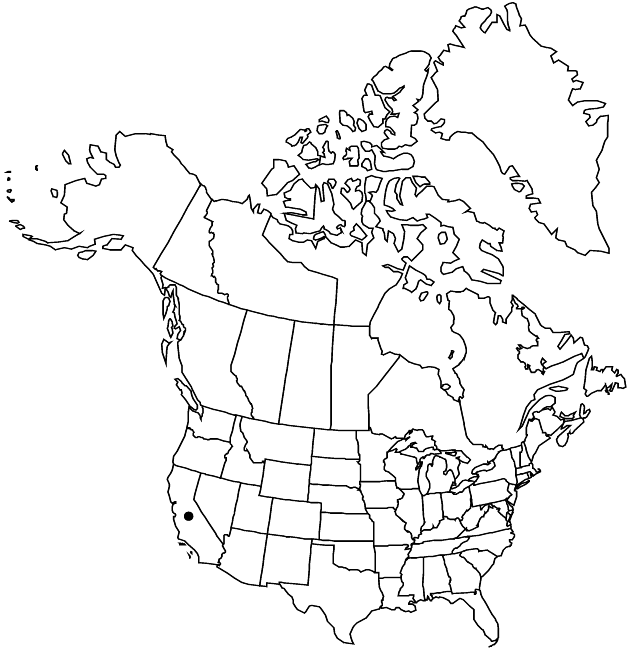Chaenactis glabriuscula
in A. P. de Candolle and A. L. P. P. de Candolle, Prodr. 5: 659. 1836.
Plants 6–60 cm; proximal indument grayish to whitish, arachnoid to densely lanuginose, or glabrescent. Stems mostly 1–5 (–12; sometimes ± horizontal); branches proximal and, often, distal. Leaves basal (often withering) and cauline, 1–10 cm; largest blades linear or ± elliptic, plane to 3-dimensional, succulent or not, (0–) 1–2-pinnately lobed; primary lobes 1–7 pairs, remote to ± congested, ultimate lobes ± plane, involute, twisted, and/or terete. Heads (± radiant) mostly 1–20+ per stem. Peduncles 1–20 (–30) cm, distally stipitate-glandular, ± villous, arachnoid-sericeous, lanuginose, and/or glabrescent. Involucres ± hemispheric to obconic or broadly cylindric. Phyllaries: longest 4.5–10 mm; outer stipitate-glandular, ± villous, arachnoid-sericeous, lanuginose, and/or glabrescent in fruit, apices erect, blunt, ± rigid. Florets: corollas bright to dark yellow, 4–8 mm (inner); peripheral corollas spreading, ± zygomorphic, enlarged. Cypselae 3–9 mm (± terete); pappi of (1–) 4 scales in 1 series, or of (5–) 8 scales in 2, abruptly unequal series, longest scales (1–) 2–8 mm. 2n = 12.
Distribution

Calif., nw Mexico
Discussion
Varieties 5 (5 in the flora).
The diverse and intergrading forms here included in Chaenactis glabriuscula have been divided by P. Stockwell (1940) and subsequent workers into as many as four species and ten varieties. Chaenactis glabriuscula is known from the southern two-thirds of the Californian Floristic Province and adjacent desert edges. It has been reported in Massachusetts as a garden escape (variety unspecified); it is not expected to persist there outside cultivation.
Complete interfertility among the taxa recognized here as Chaenactis glabriuscula vars. glabriuscula, megacephala, and lanosa was demonstrated by P. Stockwell (1940). Intraspecific crosses involving C. glabriuscula var. orcuttiana were much less successful; C. glabriuscula var. heterocarpha was not tested. As noted by W. J. Hooker and G. A. W. Arnott ([1830–]1841) and D. W. Kyhos (1965), some forms of C. glabriuscula differ from C. stevioides or C. fremontii only in corolla color, which can be lost in older or poorly preserved specimens.
Selected References
None.
Lower Taxa
Key
| 1 | Pappi of (5–)8 scales in 2, abruptly unequal series | Chaenactis glabriuscula var. heterocarpha |
| 1 | Pappi of (1–)4(–5) scales in 1 series | > 2 |
| 2 | Proximal indument whitish, ± densely lanuginose; leaves ± basal (persistent) | Chaenactis glabriuscula var. lanosa |
| 2 | Proximal indument grayish, ± arachnoid, or glabrescent; leaves basal (withering) and cauline | > 3 |
| 3 | Largest leaf blades succulent, mostly 2-pinnately lobed; stems ± horizontal | Chaenactis glabriuscula var. orcuttiana |
| 3 | Largest leaf blades scarcely succulent, 1(–2)-pinnately lobed; stems ascending to erect | > 4 |
| 4 | Longest phyllaries 7–9 × 2–3 mm, outer glabrescent in fruit; pappi: lengths of longest scales ± 0.9(–1) times corollas | Chaenactis glabriuscula var. megacephala |
| 4 | Longest phyllaries 5–7 × 1–2 mm, outer (at least medially) ± arachnoid-sericeous and, often, ± stipitate-glandular in fruit; pappi: lengths of longest scales 0.4–0.7 times corollas | Chaenactis glabriuscula var. glabriuscula |
"longest" is not a number.